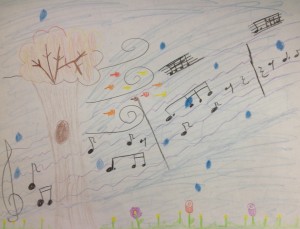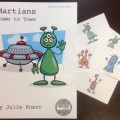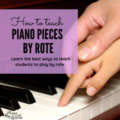Does learning to read music allow a student to be creative? YES! I often think the opposite is assumed. There is so much creativity to put into music that goes far beyond learning the notes on the page.
Here are a few things I do to encourage creativity in students’ playing:
1. Have the student draw a picture.
A student was learning “Song without Words” by Carolyn Miller. It is a beautiful, lyrical piece and allows for plenty of interpretation. I asked this student to draw a picture of the image she would have in her head while she played the piece. Here is her drawing:
I find that when students have an image in their mind that they’d like to create, their playing suddenly becomes much more musical. You will hear in the recording below that the student’s drawing fits beautifully with the piece.
2. Have the student tell a story to the piece.
A young boy was learning “Things that Go Bump in the Night” by Carol Klose. He learned the piece with correct dynamics, but he kept playing it so fast! In order for him to slow down, I wanted him to think of something specific happening in the piece. We turned off the lights and I gave him a flashlight to hold at his face. While I played the piece, he told a spooky story of creepy goblins that crawled slowly through a house. We both had so much fun and it stopped him from playing the piece too fast.
3. Add words to the piece.
Some students may have trouble tapping into their creativity on the spot. I find that some students may even be shy to express a story or picture. For those students, I give an assignment so that they can have more time to think about the piece on their own. Assigning the student to add words to the piece will help the student create a story for the piece. The student may also want to write a poem or short story that goes along with the piece.
Check out the pieces mentioned above:
Things That Go Bump in the Night

Lauren teaches piano to students of all ages. She enjoys creating resources for her students and teachers. She is the author of Ready for Theory®. For personalized help, check out the consultations page for teachers.







These are such good ideas! It’s easy to try to give students specific comments on how to make a piece more “musical,” but trying something like this first could allow them to come up with it themselves and feel like it’s their own. I think it probably also helps foster a love for music as it can add more fun and help them relate to the communication aspect of performing. My little brother loves writing and is always coming up with interesting stories to music. He actually often takes a notebook along to concerts. I haven’t had any of my students do that for a particular affect on their playing though. Thanks for sharing!
I’m glad you like the ideas, Melody! This is a fairly new blog, but I plan to write more posts like this. Feel free to sign up for my mailing list.